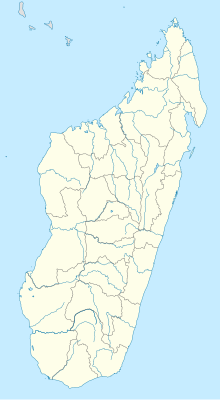
The economy of Madagascar is US$9.769 billion by gross domestic product as of 2020, being a market economy and is supported by an agricultural industry and emerging tourism, textile and mining industries. Malagasy agriculture produces tropical staple crops such as rice and cassava, as well as cash crops such as vanilla and coffee.

Vale Canada Limited is a wholly owned subsidiary of the Brazilian mining company Vale. Vale's nickel mining and metals division is headquartered in Toronto, Ontario, Canada. It produces nickel, copper, cobalt, platinum, rhodium, ruthenium, iridium, gold, and silver. Prior to being purchased by CVRD in 2006, Inco was the world's second largest producer of nickel, and the third largest mining company outside South Africa and Russia of platinum group metals. It was also a charter member of the 30-stock Dow Jones Industrial Average formed on October 1, 1928.
Sumitomo Corporation is one of the largest worldwide sōgō shōsha general trading companies, and is a diversified corporation. The company was incorporated in 1919 and is a member company of the Sumitomo Group.
Falconbridge Limited was a Toronto, Ontario-based natural resources company with operations in 18 countries, involved in the exploration, mining, processing, and marketing of metal and mineral products, including nickel, copper, cobalt, and platinum. It was listed on the TSX and NYSE (FAL), and had revenue of US$6.9 billion in 2005. In August 2006, it was absorbed by Swiss-based mining company Xstrata, which had formerly been a major shareholder.

First Quantum Minerals is a Canadian-based mining and metals company whose principal activities include mineral exploration, development and mining. Its main product is copper, which accounts for 80% of revenues as of 2016.
Sherritt International is a Canadian resource company, based in Toronto, Ontario. Sherritt is a world leader in the mining and refining of nickel and cobalt – metals essential for the growing adoption of electric vehicles. Its Technologies Group creates innovative, proprietary solutions for oil and mining companies around the world to improve environmental performance and increase economic value. Sherritt is also the largest independent energy producer in Cuba. Sherritt’s common shares are listed on the Toronto Stock Exchange under the symbol “S”.

Norilsk Nickel, or Nornickel, is a Russian nickel and palladium mining and smelting company. Its largest operations are located in the Norilsk–Talnakh area near the Yenisei River in the north of Siberia. It also has holdings in Nikel, Zapolyarny, and Monchegorsk on the Kola Peninsula, in Harjavalta in western Finland, and in South Africa.
Lundin Mining Corporation is a Canadian company that owns and operates mines in Sweden, United States, Chile, Portugal and Brazil that produce base metals such as copper, zinc, and nickel. Headquartered in Toronto, the company was founded by Adolf Lundin and operated by Lukas Lundin. While it was incorporated to pursue an interest in a diamond mine in Brazil, the company re-structured and raised funds to develop the Storliden mine in Sweden. It purchased the Swedish Zinkgruvan Mine from Rio Tinto and then merged with Arcon International Resources for its Galmoy Mine in Ireland and Eurozinc for its Neves-Corvo mine in Portugal. The company subsequently purchased and operated the Eagle mine, Candelaria mine, and Chapada mine.
Tenke Fungurume Mining SA (TFM) is one of the largest copper and cobalt producers in the Democratic Republic of Congo (DRC). Construction on the site began in the latter part of 2006, and in 2009, TFM produced its first copper. The mine has since become a vital source of income for local communities and the country by way of royalties and taxes, as well as the largest employer in the region.
The second-largest mineral industry in the world is the mineral industry of Africa, which implies large quantities of resources due to Africa being the second largest continent, with 30.37 million square kilometres of land.With a population of 1.4 billion living there, mineral exploration and production constitute significant parts of their economies for many African countries and remain keys to economic growth. Africa is richly endowed with mineral reserves and ranks first in quantity of world reserves for bauxite, cobalt, industrial diamond, phosphate rock, platinum-group metals (PGM), vermiculite, and zirconium.
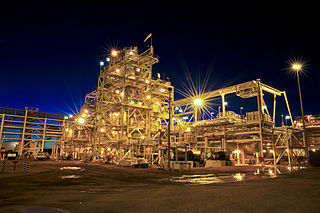
The Ravensthorpe Nickel Mine is a nickel mine and hydrometallurgical processing plant located at Bandalup Hill, 35 km (22 mi) east of Ravensthorpe, Western Australia.
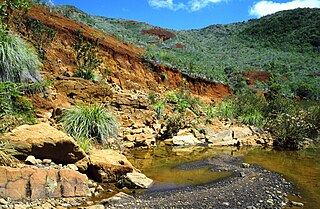
Nickel mining in New Caledonia is a major sector of the New Caledonian economy. The island contains about 7.1 million tonnes of nickel reserves, about 10% of the world's total. With an annual production of 200,000 tonnes in 2020, New Caledonia was the world's fourth largest producer after Indonesia (760,000), Philippines (320,000), and Russia (280,000), followed by Australia (170,000) and Canada (150,000).
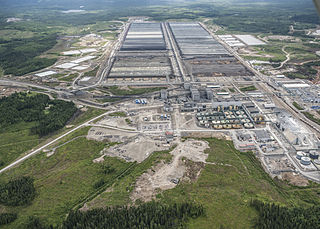
The Talvivaara mine is one of the largest nickel mines in Finland. The mine is located in Sotkamo in Kainuu region of Finland. The mine is owned by government-established Terrafame, which bought it from the bankruptcy-bound Talvivaara Mining Company in 2015. Its annual production capacity is over 10 million tonnes of ore. The mine has reserves amounting to 1 billion tonnes of ore grading 0.22% nickel, 0.13% copper, 0.5% zinc and 0.02% cobalt thus resulting 2.2 million tonnes of nickel, 1.3 million tonnes of copper, 5 million tonnes of zinc and 0.2 million tonnes of cobalt.

A nickel mine is a mine that produces nickel. Some mines produce nickel primarily, while some mines produce nickel as a side-product of some other metal that has a higher concentration in the ore.

Nickel mining in Western Australia has been an industry that has had many fluctuations of fortune in its history. Large fluctuations in the world nickel price have seen mines close and reopen on several occasions.
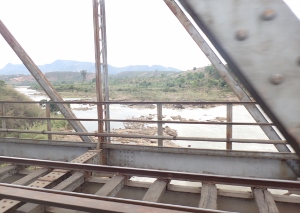
The Mangoro River is the largest river on the east coast of Madagascar by basin size and water volume, and is 300 km in length.

The Goro mine is a large nickel mine in the south of New Caledonia, near the township of Yaté, Prony Bay, in the South Province. It was owned by the Brazilian company Vale, who, after failing to sell it to Melbourne-based New Century Mining in June 2020 sold it to Prony Resources New Caledonia consortium in April 2021. The large mine and plant was opened at Goro in 2010 although it has had frequent problems and stoppages.

The mining industry of Madagascar is mostly on a small scale, centred mainly around remote locations with large mineral deposits. Mining potential is noted in industrial and metallic minerals, energy, precious and semi-precious stones, as well as ornamental stone. The mining sector was neglected by the government for decades prior to the mid-2000s. In 2013, the mining industry, a main source of foreign investment, was struggling due to "low metals prices and distrustful companies", attributed to a 2009 coup.
Huayou Cobalt Co., Ltd primarily operates as a supplier of cobalt and its associated products, such as cobalt tetroxide, cobalt oxide, cobalt carbonate, cobalt hydroxide, cobalt oxalate, cobalt sulfate, and cobalt monoxide. The company is headquartered in the Tongxiang Economic Development Zone of Zhejiang, China.
